My Favourite Thai-inspired Vegetable Curry
Since I last posted a lot of things have happened in my life. The first and most important one was my recent move from Porto to Glasgow. Between preparing and planning all the stuff that involves moving into a different country, I barely had time to cook, let alone blog. However, and now that I’ve been here for a month and got (almost) everything sorted out (housing, burocracy and the likes), I´m happy to resume blogging and do the very best I can to bring you my favourite vegan recipes.
I’ve been thinking a lot about how things will naturally change around here (in terms of photography and recipe content as well) since I’m not in my own kitchen and do not have all the kitchen tools I’m used to. This will naturally affect the kind of recipes I’ll be posting from now on – they will be simpler, and since I do not own a food scale, lack the accuracy I’d like them to have. However, I do prefer to face this as a challenge (and one that I’m happy to take) rather than a limitation. I came to Glasgow with a 20 kg suitcase. I brought mostly clothes, one book, my laptop and my camera. I left in Porto all my cookbooks and the boards, plates and cutlery that have helped me build this blog’s photography identity over time. I’m already missing my bedroom’s blue wall, the wall that was the background of most of the food pictures I posted here for the last 5 years. But I’m also a firm believer that things happen for a reason. I was probably getting too comfortable with my own style of doing things, and this an opportunity to question that and try new and fresh approaches.
So, let’s talk curry today. I didn’t bring any of my cookbooks with me, but if I could only bring one, I’d definitely go with The Millenium Cookbook. Most of the recipes I cooked from this book were outstanding, and a great number of them have become part of my cooking repertoire. That’s the case with this curry. The original recipe is more labour intensive, and in order to make it simpler and faster I omitted some steps, trying not to compromise too much on the flavour. The recipe might still seem a bit of a project though, but I can guarantee you it’s worth making your own curry “base” from scratch, blending the sauce, and so on. In the end, you’ll have a fantastic curry that feeds a crowd and is definitely a crowd pleaser too. If you can’t come across butternut squash this time of the year, use carrots instead (4 or 5 large ones will do) – I’ve done it before and it works just as well. Also feel free to play around with the vegetables – in the past I’ve tried green beans, broccoli and asparagus and all of them have worked nicely. Hope you enjoy the curry and I’ll be back soon! In the meantime, check my instagram feed for food-related pictures and some suburb memorabilia from Glasgow.
My favourite Thai-inspired Vegetable Curry
Recipe inspired by The Millenium Cookbook
(serves 6, as a main)
*note: I usually use two green chillies with seeds, but I can handle quite a lot of heat. If you’re less tolerable than me, use only one.
For the curry sauce:
2 medium sized onions, chopped
5 large garlic cloves, chopped
1 piece of ginger the size of your thumb, peeled and grated
1 small bunch of coriander
1 teaspoon coriander powder
½ teaspoon turmeric powder
1 teaspoon cumin powder
1 teaspoon sea salt
zest of 2 limes
juice of 2 ½ limes
2 green chillies, finely chopped* (see note above)
1 medium sized butternut squash, peeled, seeded and chopped into cubes
1 can / 400 ml full fat coconut milk
For the curry:
1 Tablespoon coconut oil, melted
1 large sweet potato, peeled and chopped into cubes
1 large carrot, peepled and chopped into cubes
1 small head of cauliflower, cut into medium-sized florets
1 small head of cabbage, thinly sliced
1 lemongrass stalk, tough outer layer removed, bruised in a mortar and pestle (optional)
1 cup / 250 ml water
250 g / 1 package smoked tofu, cubed
For serving:
3-4 spring onions, finely chopped
1 handful of peanuts, toasted
extra coriander, finely chopped
1-2 limes, cut into quarters
For the curry sauce: In a double boiler, steam about ¾ of the butternut squash for 5 to 8 minutes, or until thoroughly cooked. In a high speed blender combine the chopped onions, garlic, ginger, fresh coriander, spices (coriander, cumin and turmeric powders), salt, lime zest and juice, chilies and the coconut milk and blitz until you have a smooth sauce. Working in batches, add the cooked butternut squash to the mixture and blitz until creamy.
For the curry: In a large pot over medium heat, add the coconut oil, the carrot, sweet potato and the remaining ¼ of butternut squash. Sautée for a few minutes or until the vegetables are golden brown. Add the curry sauce followed by the bruised lemongrass stalk (if using) and 1 cup / 250 ml of water and bring to a boil. Once boiling, decrease the heat to low-medium and simmer for 10 minutes. After that time, add the cauliflower, cabbage and smoked tofu and simmer for 5 minutes longer. If the sauce seems too thick, add a bit more water to thin it out to the consistency you like (I like mine to resemble a smooth blended soup). Season with extra salt and serve with the chopped peanuts, scallions, coriander and a good squeeze of lime juice.
Curried Beans with Naan Bread
As much as I like to cook, I don’t think I could manage the demands of running a restaurant or a café. I love to cook to small groups of people, but more than ten and I start to stress out. I’m also kind of slow in the kitchen, and adding up to that, I hate to delegate tasks. Even though the idea of having a place of mine – with my food, my kind of atmosphere, and so on – sounds appealing, I’m sure it will never see the daylight because of the reasons mentioned above. However, though, that doesn’t stop me from thinking about the dishes I’d like to serve in my little imaginary café, and this one would certainly be a regular on the menu.
It’s simply beans flavored with a spicy curry paste and served with warm charred naan, to whip up the sauces – the kind of food I could eat everyday. The naan is made with both wheat and spelt flours, and you can flavor it in way you like – by adding cumin seeds, garlic, chili powder, and so on. I wanted to make a 100% spelt naan but couldn’t find white spelt flour, so had to compromise and make a wheat and whole spelt version instead. However, though, next time I find it I’ll make the bread again and update this post with how it turned out. A few words on the measurements: I always like to have all the ingredients for each recipe weighted into grams (it’s way more accurate than cups), but my scale has been having some sort of identity crisis and only gives me the weights in pounds. I was a bit lazy and didn’t want to go into the trouble of weighting things down and then make the conversions, but if the scale doesn’t change its mind soon, I’ll buy another one and reintroduce the proper metric measurements.
Curried Beans with Naan Bread
(serves 4)
for the naan bread:
1 cup wheat flour
1/2 cup whole spelt flour
1/2 cup warm water
3/4 teaspoon active dry yeast
1/4 teaspoon salt
2 teaspoons brown rice syrup
1 teaspoon olive oil
optional: cumin seeds, thyme, chili flakes, coriander…
for the curried beans:
4 cups red beans (canned is fine)
3 large garlic cloves, finely chopped
2 tablespoons melted coconut oil
3 tablespoons chopped canned tomatoes
1 large fresh green chili, finely chopped
1/2 teaspoon salt
2 teaspoons coriander seeds
1 teaspoon fenugreek seeds
1 large lemon (cut into 4 wedges) and chopped avocado for serving
To make the naan bread: Add, to a medium bowl, the water, yeast, salt, brown rice syrup and olive oil, and whisk everything together. In another bowl, combine the flours. Add the yeast mixture to the bowl with the flour and knead until you have a firm, yet soft to the touch, dough. If the dough is too wet, add more flour until you reach the right consistency. Cover the bowl with a clean kitchen towel and leave it in a warm place to rise for 2 hours.
Heat a large grilling pan over medium-high heat. Dust a working surface with flour and add the proofed dough. Knead for a couple of minutes and divide it into 4 equal parts. Roll each ball of dough into a not too thin elongated shape and add the topping you want (if using) pressing it down gently into the dough. Brush the naan with water and add it to the grilling pan, water side down, and cover with a lid. Cook for 30-50 seconds, or until you start seeing some bubbles on it. Cook the other side for approximately the same time, or until lightly charred. Repeat this process with the remaining balls of dough.
To make the curried beans: Add all the ingredients for the curry, except the beans, to a food processor and pulse until it turns into a paste. Add the curry to a pot over medium heat and cook, stirring often to avoid sticking to the bottom of the pot, for 2-3 minutes. Add the beans, 3/4 cup of water (if you cooked your own beans use the cooking water), and cook for additional 5 minutes. Serve immediately.
Add a good squeeze of lemon juice to each serving, along with some chopped avocado and a drizzle of olive oil. Serve with the naans.
Tempeh Lemon Curry
I know I haven’t been around for a while but, hey!, I’m still here, and today we’ll talk curry. I realize this is the first curry recipe I write about on the blog, and to be honest I don’t know how that happened because it’s the kind of dish I cook often. I know there are a lot of vegetable curry recipes on the internet and that you probably don’t need another one, but I’ve made this curry countless times and think it’s a good one to have on your repertoire.
The variations in here could be endless. I’ve made it before with spinach in place of the cabbage and it turned out good, but I prefer to use the latter mainly because of the texture it brings to the whole thing. A word on tempeh: it’s well known that steaming tempeh for 15 minutes before actually cooking with it, removes its bitterness. To be honest, I don’t mind the bitterness and I think it goes practically unnoticed in here, camouflaged by the bold flavours of all the spices and the lemon. Having said this, if you want to steam it first (or even sub it for tofu), go ahead.
Enjoy the curry, have a great summer (guess what: here in Portugal has been raining) and I promise to come back soon! (:
Tempeh Lemon Curry
(serves 4)
3 Tbs. olive oil, divided
1 large onion, finely chopped
4 garlic cloves, finely chopped
1 tsp. ground coriander seeds, roughly pounded in a mortar and pestle
1 tsp. mustard seeds, roughly pounded
1 tsp. caraway seeds, roughly pounded
2 medium carrots, cut into cubes
1 Tbs. fresh ginger
1 tsp. ground turmeric
1 red chilli, finely chopped
1 large zucchini, cut into half moons
1 cup / 250 ml coconut milk
4 cups shredded cabbage
250 gr tempeh, cut into cubes
½ teaspoon
1 tsp. rice syrup
2 Tbs. mirin
zest of one lemon
1 handful toasted cashews, coarsely chopped
1 handful fresh mint, coarsely chopped
juice of ½ lemon
In a large pan over medium heat, add 2 tablespoons of olive oil, onion, garlic cloves and coriander, mustard and caraway seeds. Fry for 3-4 minutes or until the onion has softened and the spices have toasted a bit and smell fragrant.
Add the carrots, fresh ginger, turmeric, chilli and zucchini to the pan. Give everything a good stir and add the coconut milk. Cover the pan and cook for 5 minutes.
In the meantime, heat the remaining 1 tablespoon of olive oil in a frying pan over medium-high heat. When the oil is hot, but not smoking, add the tempeh cubes and fry until golden brown. Turn off the heat, sprinkle the tempeh with a pinch of salt and add it to the pan with the vegetables.
Now, add the cabbage to the pan as well, pressing it gently with the back of an wooden spoon so that it’s covered by the coconut milk. If, at this point, the curry looks as if it hasn’t enough liquid, add up to 1/3 cup of it, but keep in mind the cabbage will release a lot of water too. Cover the pan and cook for additional 5 minutes, or until the cabbage is wilted. Add the salt, rice syrup, mirin and lemon zest. Stir everything together and finish off with the lemon juice, toasted cashews and mint.
Recipe adapted from The Modern Vegetarian Kitchen, by Peter Berley, published by William Morrow Cookbooks, 2008
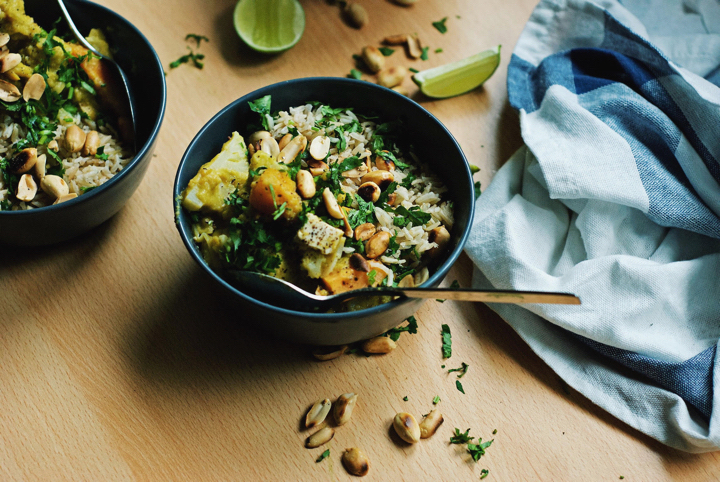
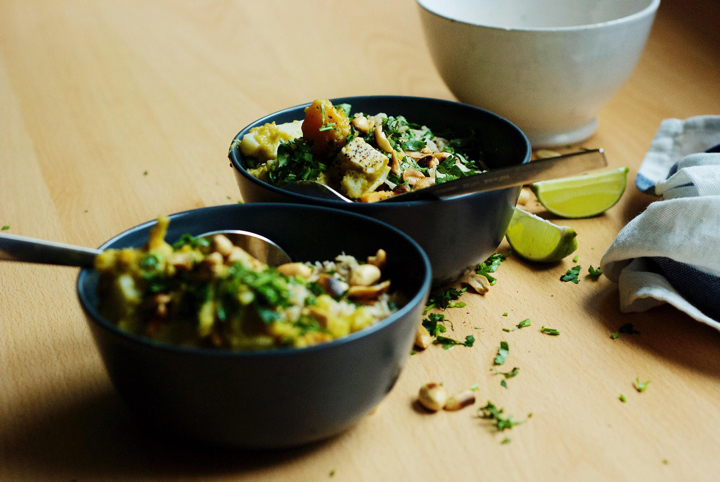
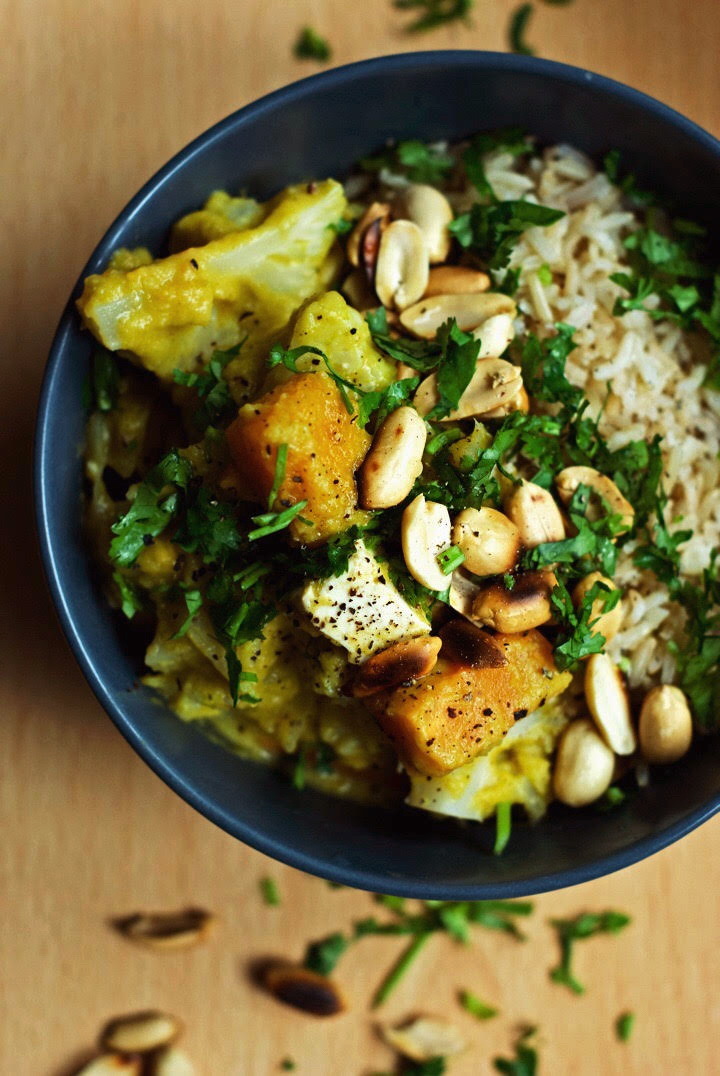
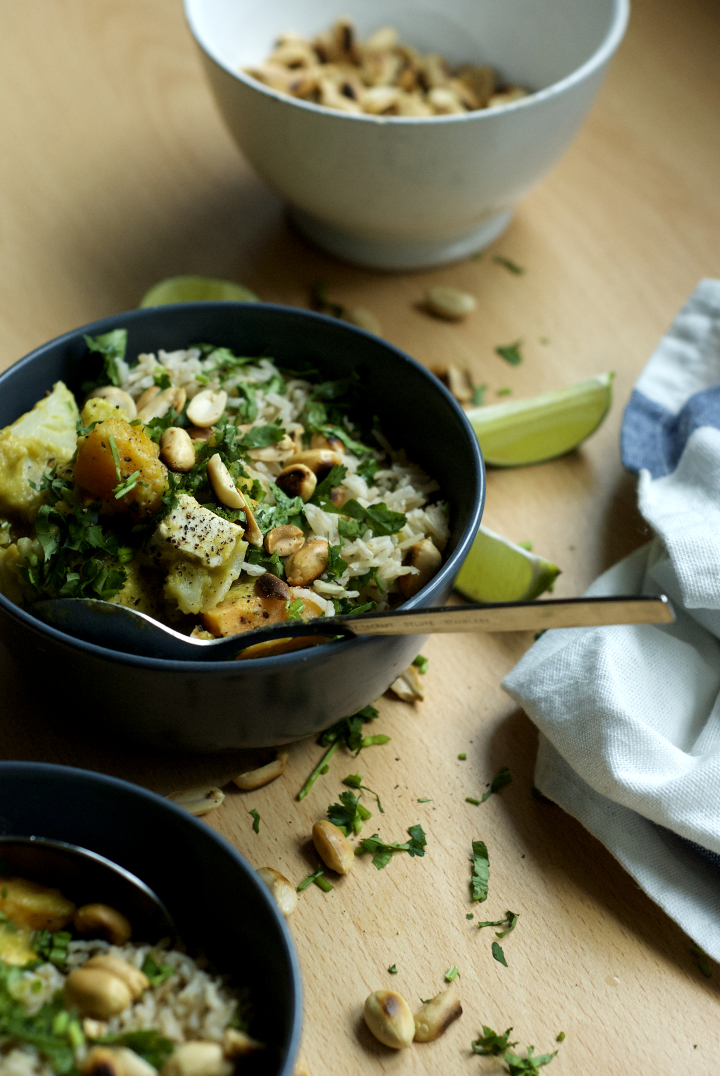
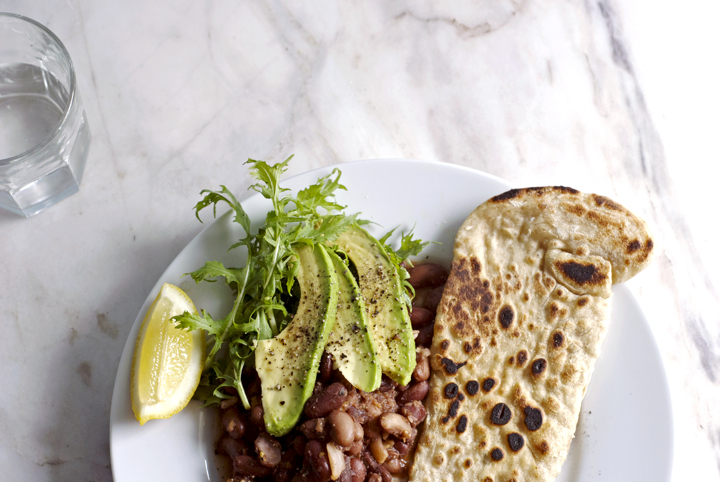
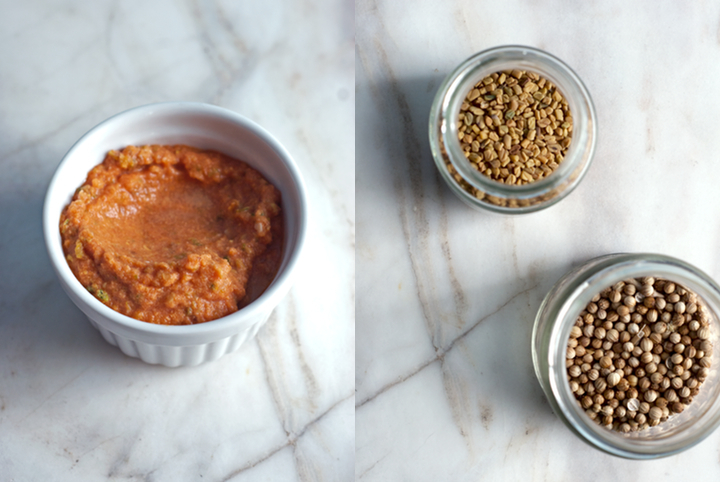
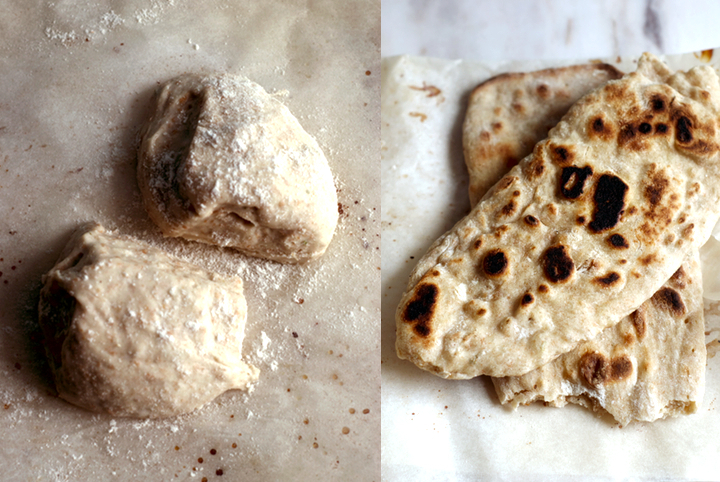
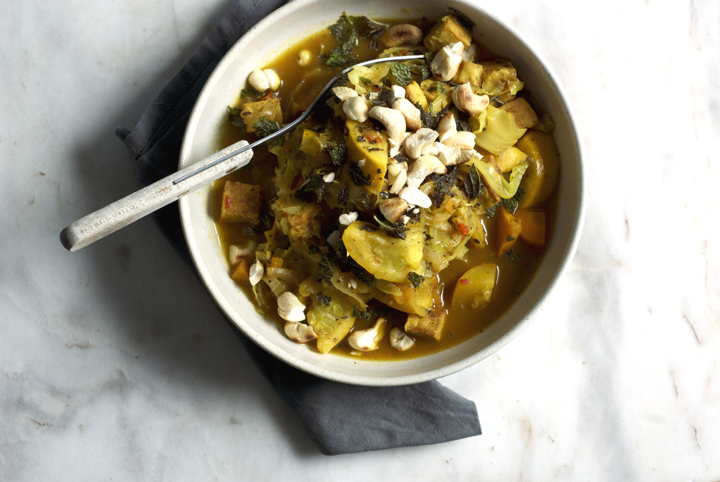
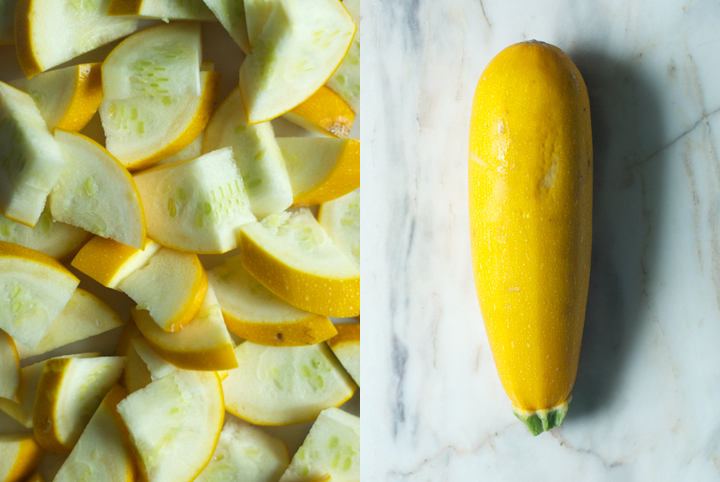
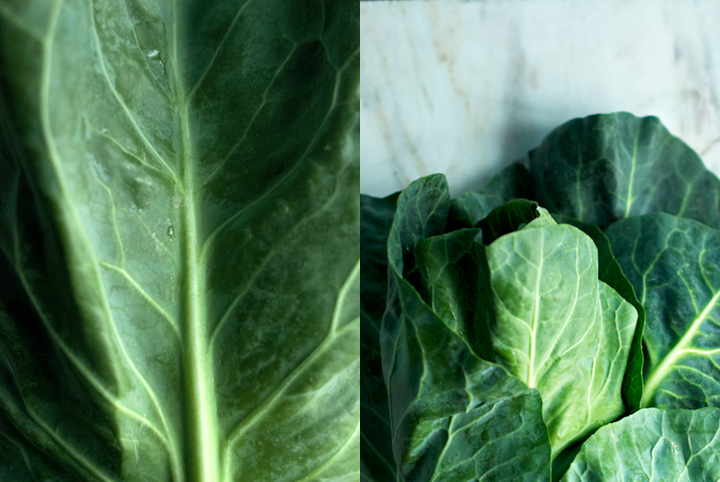
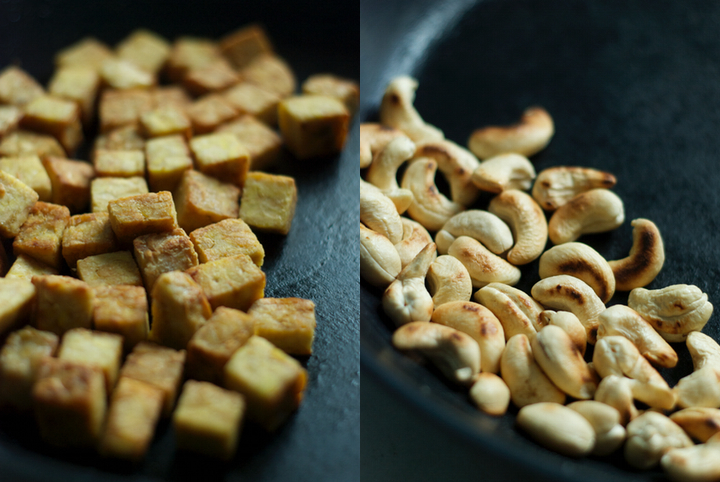
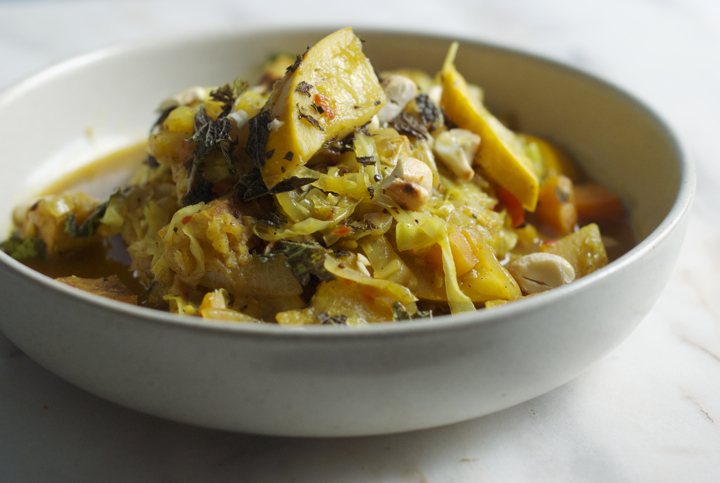
4 comments